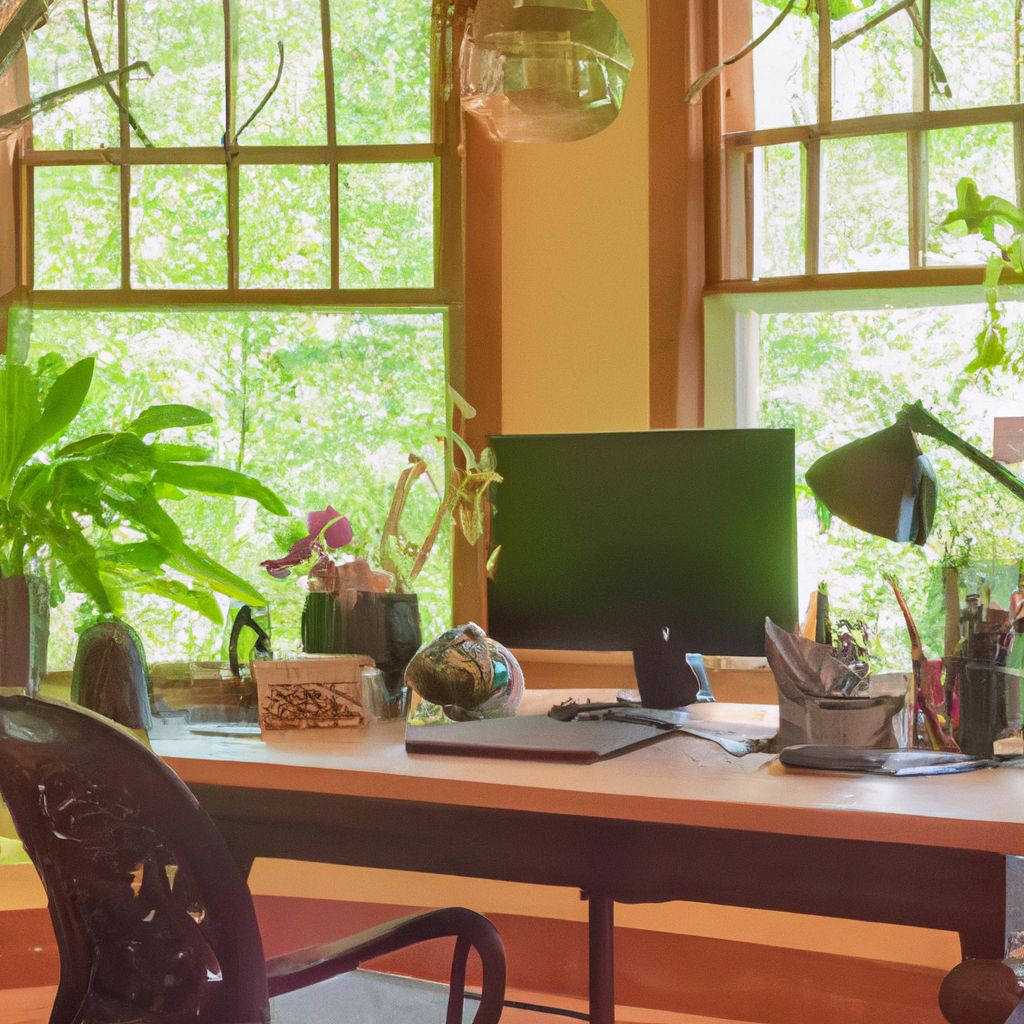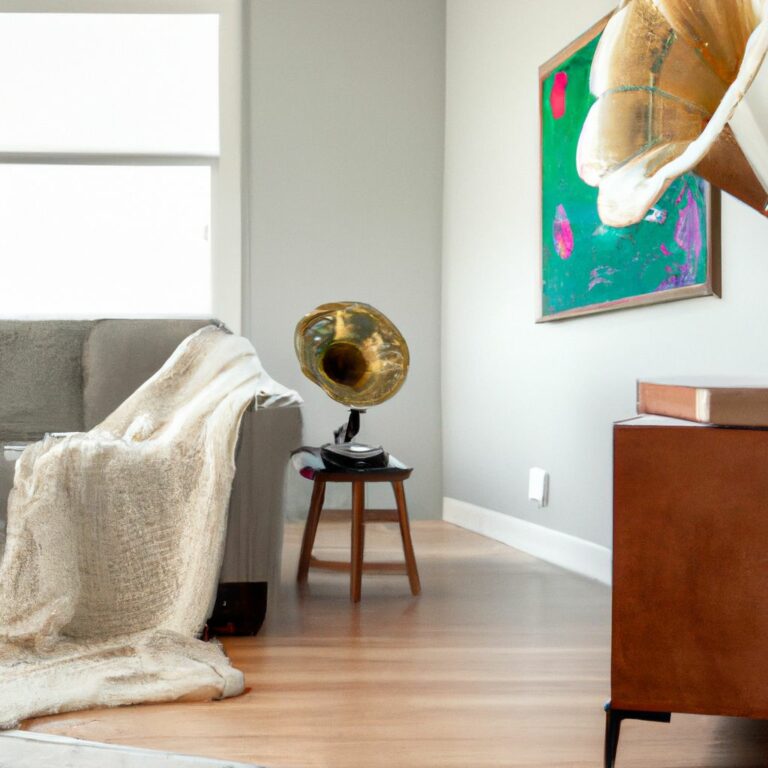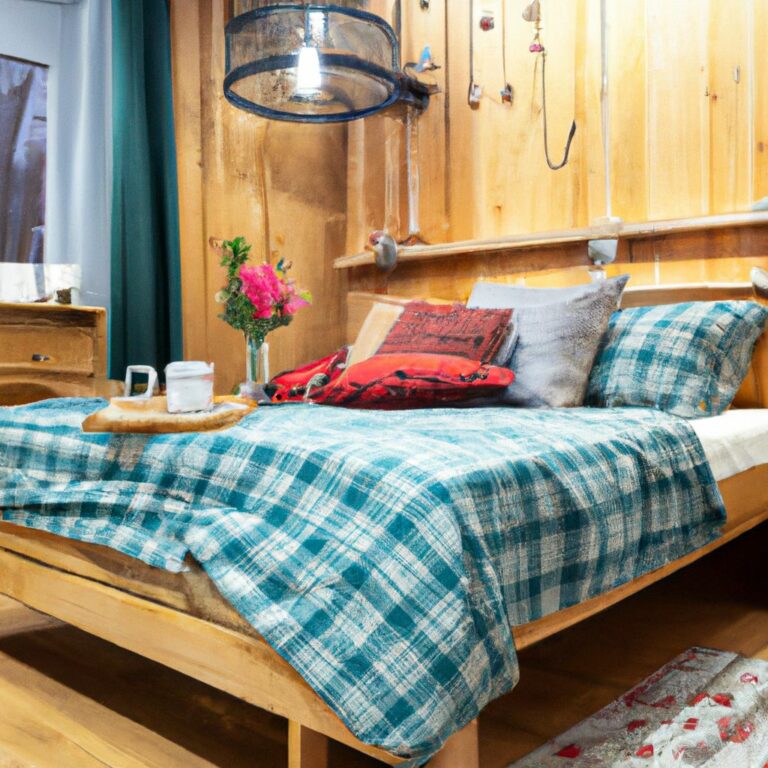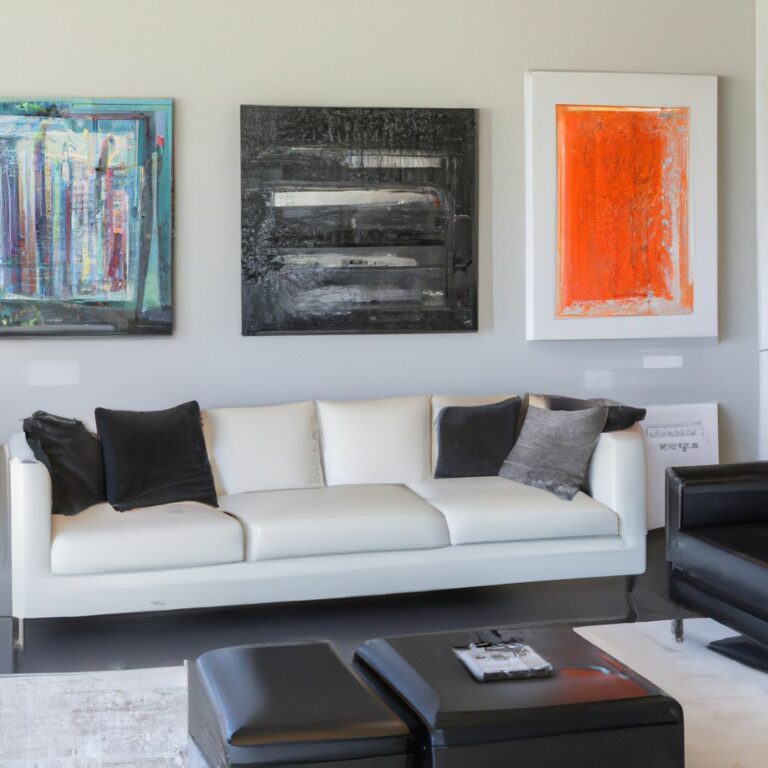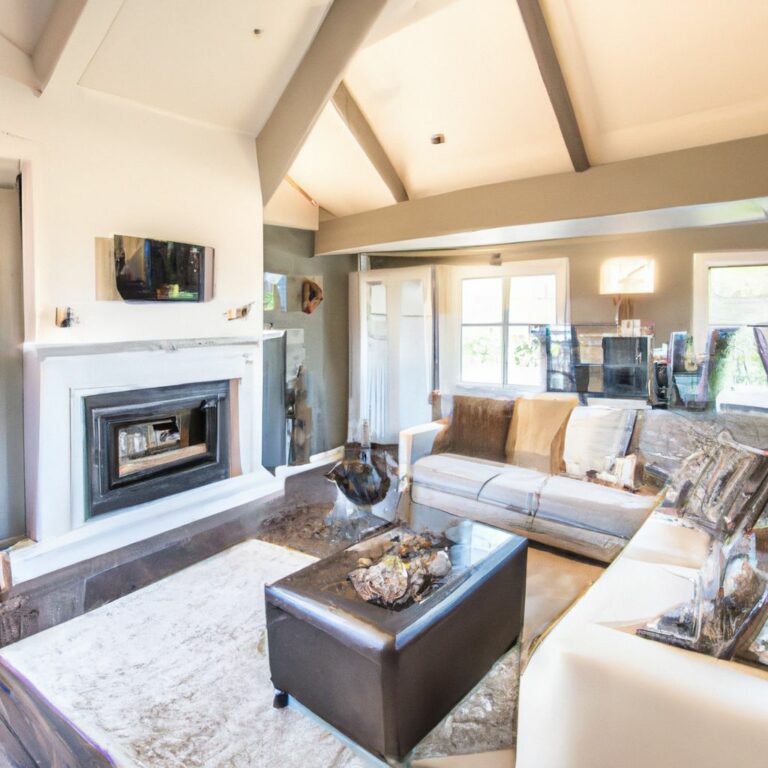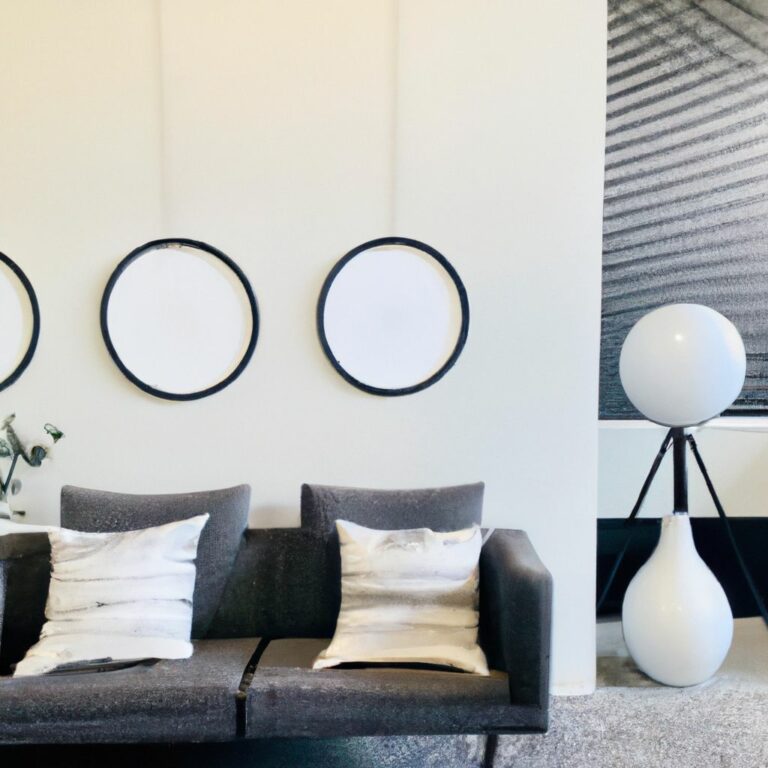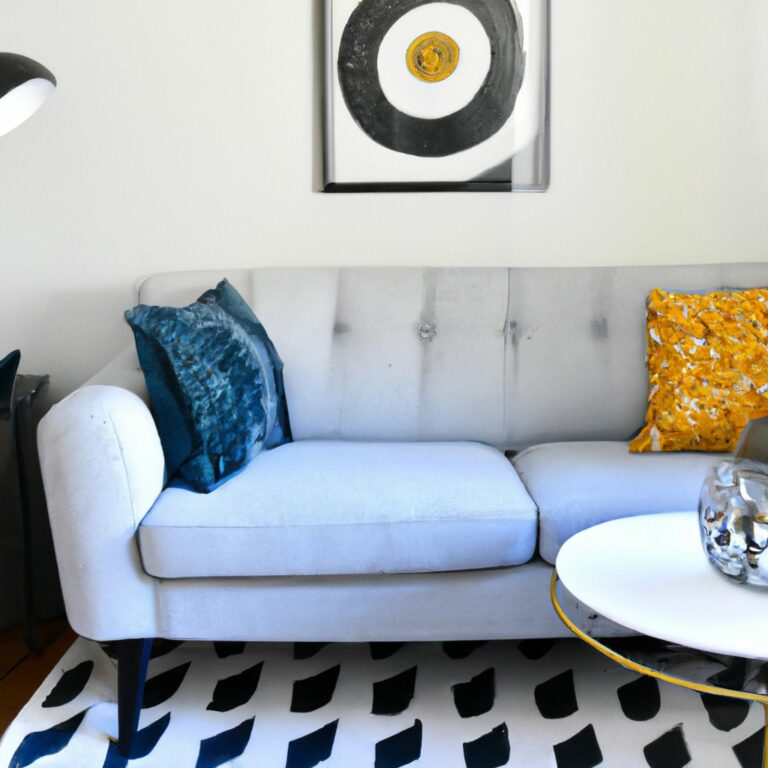Introduction
To create a well-decorated home office, it’s crucial to understand why it’s important. In this section, we’ll discuss the significance of having a well-decorated home office and explore various sub-sections, such as maximizing productivity, enhancing creativity, and improving overall well-being.
Why is it important to have a well-decorated home office?
A well-decorated home office is a must. It creates an atmosphere that boosts productivity and creativity. A pleasingly designed space can motivate people to work more efficiently. Plus, it bolsters focus and concentration so tasks can be completed with ease.
It also projects professionalism and attention to detail. Clients and colleagues see an inviting and tidy space. This builds credibility and trustworthiness, both pivotal in any professional relationship.
Having a well-decorated home office helps balance life. It’s a designated area just for work. It’s easier to detach from work and have a healthy work-life integration.
There’s also the emotional aspect. Our environment affects our mood and mindset. A dull, uninspired workspace can lead to boredom and demotivation. On the other hand, an attractive environment can make us feel upbeat and positive.
Here’s a hot tip: Choose the right color scheme. It could make or break your design.
Choosing the Right Color Scheme
To create a harmonious ambiance in your home office, maximize productivity, and enhance your overall well-being, dive into the realm of color psychology. Choosing the right color scheme is crucial. Consider the use of calming colors and adding pops of color for inspiration.
Considering the use of calming colors
Colors have a huge effect on our emotions. When decorating, it’s wise to use calming colors. They can make a soothing and peaceful atmosphere. Let’s look at why these colors are great:
– Soft blues: Blue lowers blood pressure and heart rate – perfect for relaxation.
– Subtle greens: Green symbolizes harmony and balance. Great for freshness and calmness.
– Serene grays: Gray gives stability and composure – ideal for elegance and serenity.
– Tranquil purples: Purple is linked to spirituality and mindfulness. Lavender and lilac are perfect for bedrooms and meditation spaces.
– Gentle neutrals: Beige, ivory, and taupe provide a serene look.
– Earthy browns: Brown connects us with nature and creates a warm atmosphere.
Light plays an important role in how colors appear in a room. Natural textures like wood or stone can also improve relaxing effects.
I used soft blue walls in my bedroom – the transformation was amazing! Every time I enter, I feel calm. It has made a big difference to my sleep and well-being.
Adding pops of color for inspiration
For a unique design, mix contrasting colors. Pair warm and cool colors, or use complementary colors for vibrancy. Keep in mind color psychology – different colors evoke different emotions and have symbolic meanings. Introduce accent colors to draw attention. Create harmony with analogous or monochromatic color schemes. Consider your target audience’s preferences, cultural background, and associations with colors. Experiment with shades, tones, and tints to add depth and dimension. Step outside of the ordinary and embrace color for inspiration. Don’t miss out on the chance to captivate your audience and make a lasting impression – start exploring today! Just make sure your furniture isn’t a shade of regret.
Selecting the Right Furniture
To ensure your home office is both functional and appealing, benefit from selecting the right furniture. Achieve this by choosing a comfortable chair and desk, as well as making use of storage solutions. These solutions will immensely contribute to your overall productivity and organization in the home office.
Choosing a comfortable chair and desk
Opt for an ergonomic chair that provides good back support and encourages good posture. Look for features like lumbar support, armrests, and adjustable seat height. Check the size of your desk and get one which has enough room for all your work essentials. A spacious desk allows for effective organisation and reduces clutter. Think about the materials used in the construction of the chair and desk. Make sure they are durable and built to last, also consider breathability and how easy it is to clean.
Think about what you prefer when it comes to furniture. Take into account style, colour, and other aesthetics that match your taste, and make your workspace more pleasant.
Remember, a comfortable chair and desk result in increased productivity, reduced fatigue, and improved focus during working hours. Quality furniture not only helps your physical well-being, but also adds an attractive look to your workspace. Choose furniture that meets your needs, as well as looks great. Get furniture that reflects your style, and provides comfort for long hours of work. Make an informed decision today!
Making use of storage solutions
Storage solutions are a must-have for stylish furniture. They offer practicality, organization, and a beautiful aesthetic to any space. Here are three tips to get the most out of them:
- Multi-functional furniture: Get pieces that serve more than one purpose. An ottoman with storage is a great seating option and a place to store items like blankets and magazines.
- Utilize vertical space: Try shelves and wall-mounted cabinets. This will help you organize efficiently and create an illusion of more space.
- Hidden storage options: Furniture with hidden storage compartments like bed frames with drawers or coffee tables with lift-up tops can help keep your living area neat and tidy without compromising on style.
When selecting furniture and storage solutions, consider factors such as the size of the items you need to store, accessibility requirements, and the design theme of the room. Functionality is key – with creativity, you can achieve the look and feel of an organized, stylish living space.
Fun fact: According to The American Psychological Association, de-cluttering and organizing can reduce stress levels and improve mental well-being!
Maximizing Natural Light
To maximize natural light in your home office, implement these tips: Place the desk near a window for an invigorating workspace. Create a light and airy ambiance by using sheer curtains or blinds.
Placing the desk near a window
Position your desk near a window to make the most of natural light and its many advantages. Not only will it brighten up your workspace, but it can also increase productivity and overall wellness. Sunlight streaming in through the window can lift your mood and sharpen your focus, making tasks feel more enjoyable.
Exposure to natural light helps regulate circadian rhythms, which affects our sleep and alertness during the day. Placing your desk near a window allows you to take advantage of this and experience heightened mental clarity.
Plus, natural light can ease eye strain from long screen times. Artificial lighting can bring on headaches, eye fatigue, and even vision problems. Positioning your desk near a window can prevent these issues by providing plenty of natural light.
Studies have shown that workers who get to enjoy natural light have improved job satisfaction and overall well-being. According to Northwestern University’s Feinberg School of Medicine, they sleep better at night and are less prone to depression or other health issues.
Make the most of natural light – position your desk near a window and see the difference it makes. Allow sheer curtains or blinds to bathe your room in natural light, creating an inspiring atmosphere for yourself.
Using sheer curtains or blinds
Sheer curtains or blinds can give any room a delicate, elegant touch! They’re lightweight and airy, adding sophistication. Plus, they let in lots of natural light, but still keep privacy.
These window coverings also create an illusion of openness, making small spaces feel larger and more welcoming. Not to mention, they don’t need much maintenance like drapes or shutters.
So don’t miss out on the chance to make your home more inviting. Show off the beauty of natural light, while still maintaining privacy and adding that special something. Additionally, clearing the clutter not only maximizes natural light but also gives you a great excuse for misplacing things!
Creating an Organized and Clutter-Free Environment
To create an organized and clutter-free environment for your home office, utilize organizational tools and shelves while establishing a filing system. With these solutions in place, you can ensure a neat and efficient workspace that allows for increased productivity and a sense of calm.
Utilizing organizational tools and shelves
Categorize your items to make the most of the space.
Put up shelves and use clear containers to save time.
Label and color-code for faster identification.
Utilize hooks and hangers to keep frequently used items at hand.
Optimize corner spaces with corner shelves or slim organizers.
For an extra touch, try adjustable shelving units and drawer inserts.
Start decluttering now and enjoy the peace of mind that comes with an organized environment.
Time saved is time earned!
Pursue the unicorn of organized chaos and reap the rewards.
Establishing a filing system
Divide-and-conquer! Start by breaking down docs into categories based on purpose. For example, financial, contracts, correspondence and project-related files. Sub-divide each category further. Eg. under finances have tax returns, bank statements and invoices. Use clear labels so you know what’s inside each folder. Consider use-frequency and accessibility when deciding where to store each file. Dedication and consistency are key for successful filing. Don’t forget digital storage options too! Finally, spruce up your workspace with personal touches – avoid cat hair and crumbs though!
Incorporating Personal Touches
To make your home office truly feel like your own, incorporate personal touches. Displaying artwork or photographs and including plants or other decorative elements are two solutions that will enhance the ambiance and reflect your unique style and personality.
Displaying artwork or photographs
Displaying Artwork or Photographs:
Artwork and photos are a great way to make your space unique! Here are some cool ideas:
- Gallery Wall: Arrange artwork and photos of different sizes, frames and orientations. Create a stunning display.
- Floating Shelves: Showcase artwork and framed photos on floating shelves. Layer smaller pieces in front of larger ones for depth.
- Rotating Wall Display: Change up the look by using a rotating wall display. Easily switch out artwork or photographs.
- Picture Ledges: Versatile option for both artwork and photographs. Swap out pieces for a fresh look.
For an extra special touch, add small decorations around the artwork or use LED lights to highlight certain pieces.
Incorporating Personal Touches:
Make your space unique with artwork and photos that reflect your personality. Decorate with vases, figurines or plants. Place LED lights to highlight pieces for an awesome ambiance.
Fun Fact:
Interior Design magazine says incorporating personal touches is a trendy design approach that adds warmth and character. Plants bring life and remind us we can’t even keep a succulent alive, let alone a relationship!
Including plants or other decorative elements
Plants Types? Placement? Benefits? Consider these when sprucing up your space!
Flowering plants like roses and orchids in the corners bring vibrant color and freshness. Succulents on shelves or windowsills provide a modern touch. Indoor trees as a focal point in the living area enhance visual appeal and purify the air. And for those who need to save space, hanging plants from the ceiling or on hooks create a cozy feel!
To further add personality, artwork or sculptures work great. A strategically placed sculpture can be an eye-catching centerpiece that complements the plants. And abstract paintings or nature-inspired photographs add depth.
These suggestions make sense because plants and decorative elements bring nature indoors while expressing personal style. Moreover, plants improve air quality and reduce stress. Decorative elements like artwork or sculptures add a unique touch, creating a visually appealing environment.
Incorporating personal touches through plants and decorative elements lets you create a space that reflects your personality and enhances your well-being. So why not bring some nature in and let your creativity blossom? And don’t forget the lighting for that perfect romantic atmosphere!
Enhancing the Lighting
To enhance the lighting in your home office and create a conducive work environment, consider using task lighting for specific areas and experimenting with different light fixtures. These sub-sections will provide effective solutions for improving the illumination and overall ambiance of your workspace.
Using task lighting for specific areas
Lighting tailored to individual needs and preferences can create ambiance while addressing functional requirements. Throughout history, people have used task lighting. Ancient civilizations used oil lamps and in medieval times, candlelight was popular. The early 20th century saw lamps with adjustable arms and shades. Today, modern technology offers a range of innovative task lighting options. Get creative with light fixtures and turn any room into a dance party!
Experimenting with different light fixtures
Experiment with these light fixtures:
- Chandeliers: Big, ornate lights that hang from the ceiling.
- Pendant Lights: One light, hangs from the ceiling on a cord or chain.
- Wall Sconces: Fixed to the wall, provides up or down light.
- Table Lamps: Portable, sits on a table or desk.
Unique options include:
- Track lighting – adjustable spotlights along a track.
- Floor lamps – adjustable head for illuminating specific objects.
Lighting experimentation has been around for centuries! Candles, oil lamps, gas lamps, electric lights – we have countless options today. Make your space a horror movie-free zone by using the right light fixtures!
Optimizing Ergonomics
To optimize ergonomics in your home office, focus on setting up the workspace for optimal comfort and productivity. Consider the use of ergonomic accessories to further enhance your working environment.
Setting up the workspace for optimal comfort and productivity
Choose a desk that allows your body to align correctly and have enough space for items you need.
Invest in a chair with adjustable height, lumbar support, and armrests for optimal posture and reduce strain on your back.
Good lighting is key to prevent eye strain. Get natural light or task lights to light up your workspace.
Keep your workspace clutter-free with drawers, shelves, or organizers. This improves your focus and productivity.
Additionally, use ergonomic accessories such as wrist rests, footrests, or monitor stands if you need them. These accessories can improve your comfort and help stop any musculoskeletal disorders.
Pro Tip: Take regular breaks and do some stretching exercises to relax your muscles and keep energy levels high throughout the day.
Considering the use of ergonomic accessories
Ergonomic accessories can help improve focus and efficiency. An adjustable monitor stand can keep eye level proper and reduce neck strain. A footrest offers support for feet, aiding circulation and cutting back discomfort. It’s key to be aware of the specific details of every accessory. For example, choosing an ergonomic mouse that fits comfortably in your hand can reduce wrist strain. Investing in a standing desk converter can help alternate between sitting and standing postures, giving relief from long sitting.
For better ergonomics, adjusting lighting conditions is beneficial. Task lighting can reduce eye strain and headaches. Also, taking regular breaks and doing stretching exercises can relax muscles and reduce tension. And don’t forget: a cluttered desk leads to a distracted mind, but a trusty fidget spinner is the fuel for procrastination.
Avoiding Distractions
To minimize distractions in your home office, implement strategies that will help you stay focused. Minimize noise from outside sources and find ways to manage distractions effectively. By implementing these solutions, you can create an environment conducive to productivity and concentration in your home office.
Minimizing noise from outside sources
To achieve a peaceful atmosphere, it’s important to reduce external noise. Here are some techniques that can help:
- Soundproof your space – use acoustic panels, rugs and other materials.
- Shut windows and doors – stopping the outside world from entering.
- Invest in noise-canceling headphones – these block out external sounds.
- Use white noise machines – emitting calming noises to mask disruptive ones.
Plus, add music or nature sounds for extra tranquility.
For added peace, make sure your home or workspace is well-insulated. Install double-glazed windows and seal any gaps that could let in noise.
Remember, a peaceful environment means more productivity. Implement these strategies and you’ll have a serene and focused space.
Implementing strategies for managing distractions
Managing distractions can be tricky, especially in this day and age. But, there are strategies that can help you stay focused and dodge the temptations that come your way. By using these strategies, you can boost your productivity and reach your goals more quickly.
- Designate a workspace that’s free from distractions. It could be a corner of a room or a separate office space. Remove all sources of distraction, like phones and clutter.
- Set clear boundaries with others. Let family and colleagues know that when you’re in your work zone, don’t disturb you unless it’s an emergency. This will reduce interruptions and let you concentrate.
- Utilize tech tools to manage distractions. Apps and browser extensions can block certain sites or limit your time on social media. These tools can help you control your online presence and focus better.
By following these strategies, you can create an ideal environment for productivity and make sure distractions don’t slow you down. It will take some effort to establish new habits and adjust to the changes, but the rewards are worth it.
Also, use the Pomodoro Technique when tackling tough tasks. This involves intense focus with short breaks in between. This method can help you stay productive and keep distractions at bay.
With the right approach and determination, you can master the art of avoiding distractions and focus on your goals. Stay focused, stay committed! Ignoring distractions is like shooing away a mosquito during a nap – irritating, but necessary for a good outcome.
Conclusion
Decorating a home office has lots of key points to keep in mind. Color scheme, furniture placement, and other stuff play a role in creating a space that’s productive. Here are some tips and tricks!
Lighting is important. Natural light or good artificial lighting helps reduce eye strain and set the mood for working.
Organization is crucial. Get storage solutions like shelves, drawers, and bookcases. Keep office supplies and documents tidy.
Choose furniture that’s comfortable and suits your needs. Spacious desks for multiple monitors, if needed.
Personal touches can make the office more inspiring. Hang artwork/photos that motivate you. Incorporate flowers or plants for a calming atmosphere.
Ergonomics matter. Adjust your chair, desk, and monitor to make sure your posture is correct.
Experiment until you find the perfect balance between function and aesthetics. Your home office should be an extension of yourself, reflecting your unique personality!
- Easy DIY home decoration projects - June 25, 2023
- Upcycled items for home decor - June 25, 2023
- Vintage home decor ideas - June 25, 2023
